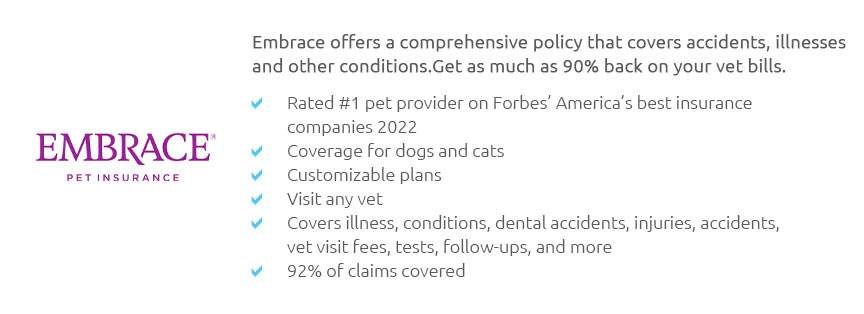 |
 |
 |
 |
 |
|
 |
|
 |
|
 |
|
 |
|
 |
|
 |
|
 |
 |
Understanding the Costs of Medical Insurance for Dogs: A Comprehensive GuideIn recent years, the topic of medical insurance for dogs has gained significant attention among pet owners who are keen on ensuring the well-being of their beloved furry companions. As veterinary costs continue to rise, many are turning to pet insurance as a viable option to safeguard against unforeseen expenses. However, understanding the intricacies of these insurance policies can be quite challenging. This article aims to provide a thorough overview of the costs associated with dog insurance, offering insights into what factors influence pricing and what potential pet owners should be aware of when choosing a plan. First and foremost, it's important to recognize that dog insurance premiums can vary widely based on several key factors. The breed of your dog is a significant determinant; certain breeds are predisposed to specific health issues, and as such, insurers might charge higher premiums for them. For instance, larger breeds like Great Danes or Mastiffs may incur higher costs due to their susceptibility to joint problems, whereas smaller breeds like Chihuahuas might have lower premiums. In addition to breed, the age of your dog plays a crucial role. Older dogs generally face higher premiums due to the increased likelihood of health issues as they age. Therefore, it might be financially prudent to start an insurance plan while your dog is still young and healthy. Another factor to consider is the type of coverage you wish to purchase. Generally, insurance plans fall into three categories: accident-only, time-limited, and lifetime coverage. Accident-only policies are the most basic and typically the least expensive, covering incidents such as injuries from accidents. However, they do not cover illnesses. On the other hand, time-limited policies provide coverage for a specific condition up to a set monetary limit or for a limited period, whichever comes first. Lifetime coverage, as the name suggests, offers the most comprehensive protection, covering ongoing conditions throughout your pet's life, albeit at a higher premium. Each of these options has its pros and cons, and pet owners should carefully weigh their choices based on their dog's specific needs and their own financial situation. Moreover, geographic location can also influence the cost of dog insurance. Veterinary costs can vary significantly between urban and rural areas, with urban areas typically being more expensive. Consequently, insurance providers adjust their rates accordingly. Furthermore, it's worth noting that many insurers offer discounts for multiple pets or if the policyholder has other types of insurance with the same company. Taking advantage of such discounts can substantially reduce the overall cost of insuring your dog. It's important to understand that while insurance can provide financial relief, not all costs will be covered. Most policies come with a deductible that the owner must pay out-of-pocket before coverage kicks in. Additionally, there may be co-pays or limits on coverage amounts, so it's crucial to read the fine print and fully understand what is and isn't covered. Ultimately, deciding whether to purchase medical insurance for your dog depends on several personal factors, including your financial stability, your willingness to take on risk, and your dog's health history. While some pet owners may view insurance as a necessary expense, others might prefer to set aside a savings fund for potential veterinary bills. Regardless of your decision, ensuring that you have a plan in place can provide peace of mind and help you prepare for unexpected events. FAQs on Medical Insurance for DogsWhat is the average cost of dog insurance? The average cost can vary significantly, ranging from $20 to $60 per month, depending on the coverage type, breed, age, and location. Does dog insurance cover pre-existing conditions? Most insurance policies do not cover pre-existing conditions, so it's important to enroll your dog in a plan before any health issues arise. Can I choose any veterinarian with my dog insurance? Many pet insurance plans allow you to choose any licensed veterinarian, but it's advisable to check with the provider to ensure your preferred vet is covered. Is dog insurance worth it? Whether dog insurance is worth it depends on your financial situation and your dog's health risks; it can provide peace of mind against high veterinary costs. How do I file a claim with dog insurance? Filing a claim typically involves submitting a claim form along with your vet's bill and records to your insurance provider, either online or via mail. https://www.metlifepetinsurance.com/blog/pet-insurance/how-much-does-pet-insurance-cost/
Dog insurance typically costs more than cat insurance, and the national average in 2025 comes in at around $60 per month. Here's a look at some of the average ... https://www.petmd.com/general-health/pet-insurance-worth-it
According to the AMVA study, the annual cost of health-related expenses for dogs was $580 in 2024. For cats, annual health-related expenses cost ... https://www.bankrate.com/insurance/pet-insurance/how-much-does-pet-insurance-cost/
The cost of pet insurance typically falls between $17 and $101 per month for dogs and $10 to $32 for cats. - Several factors influence monthly ...
|